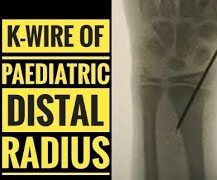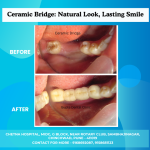Introduction: In the realm of orthopedic surgery, humerus fractures are a common occurrence, often resulting from trauma or accidents. Among the various treatment modalities available, humerus internal fixation with K-wire fixation stands out as a widely used and effective technique. In this comprehensive guide, we delve into the intricacies of this procedure, exploring its indications, surgical techniques, post-operative care, and outcomes.
Understanding Humerus Fractures: The humerus, the long bone in the upper arm, is susceptible to fractures due to its exposure and vulnerability to traumatic forces. Fractures of the humerus can occur in different regions of the bone, including the proximal, shaft, and distal segments, each presenting unique challenges in treatment and management.
Indications for Internal Fixation with K-Wire Fixation: Humerus fractures that are displaced or unstable often require surgical intervention to facilitate optimal healing and restore functionality. Internal fixation with K-wire fixation is indicated in cases where the fracture fragments need to be realigned and stabilized to promote proper bone healing. This technique is particularly beneficial for fractures that are amenable to closed reduction and minimally invasive approaches.
Surgical Techniques: The surgical approach to humerus internal fixation with K-wire fixation involves meticulous planning and execution to achieve optimal outcomes. Preoperative imaging studies, including X-rays and CT scans, aid in assessing the extent and nature of the fracture, guiding the surgical plan.
During the procedure, the patient is placed under anesthesia, and a surgical incision is made to access the fracture site. The fractured fragments are then realigned through closed reduction techniques, followed by the insertion of K-wires to stabilize the bone fragments in their proper anatomical position. Additional fixation devices, such as plates, screws, or intramedullary nails, may be used in conjunction with K-wires to provide added stability, depending on the complexity of the fracture.
Post-operative Care and Rehabilitation: Following surgery, comprehensive post-operative care and rehabilitation play a crucial role in facilitating recovery and optimizing outcomes. The patient is typically instructed to undergo a period of immobilization, during which the affected arm is placed in a sling or brace to prevent excessive movement and promote healing.
Physical therapy and rehabilitation exercises are initiated early in the post-operative period to restore range of motion, strength, and function in the injured arm. These exercises focus on gentle mobilization of the shoulder and elbow joints, gradually progressing to more strenuous activities as tolerated by the patient.
Complications and Considerations: While humerus internal fixation with K-wire fixation is generally considered safe and effective, it is not without potential risks and complications. Complications may include infection, nerve injury, non-union or malunion of the fracture, and hardware-related issues such as migration or breakage of K-wires.
To mitigate these risks, careful patient selection, adherence to surgical principles, and meticulous post-operative care are essential. Close monitoring of the patient’s progress and timely intervention in the event of complications are also critical in optimizing outcomes and minimizing adverse effects.
Outcomes and Prognosis: With advancements in surgical techniques and implant technology, the prognosis for patients undergoing humerus internal fixation with K-wire fixation has significantly improved in recent years. Studies have demonstrated favorable outcomes in terms of fracture healing, restoration of function, and patient satisfaction.
Conclusion: Humerus internal fixation with K-wire fixation represents a valuable surgical approach in the management of displaced or unstable humerus fractures. By providing stability to fractured bone fragments and facilitating optimal healing, this technique offers patients the opportunity for a successful recovery and restoration of function. Through careful preoperative planning, meticulous surgical technique, and comprehensive post-operative care, orthopedic surgeons can achieve excellent outcomes and improve the quality of life for patients affected by humerus fractures.
#pune #pcmc #chinchwad #hospital #medical #medicalservices #spinesurgeon #backspecialist #sciatica #sciaticnerve #sciaticapain #sciaticatreatment #spinesurgery #spinespecialist #spinedoctor #backpaindoctor #endoscopicspinesurgery #orthopaedicsurgeon #mistlifsurgery #cervicalpain #spinalcord #rediculopathy #backpainrelief #slippeddisc #spine #neckpain #spinalstenosis #lumberlordosis #backbonesurgery













